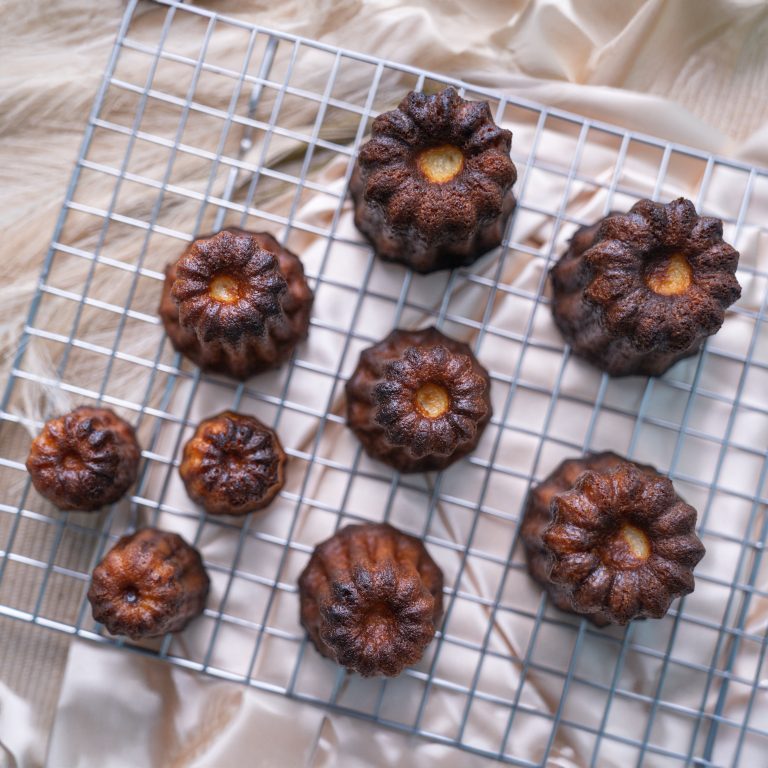
The key to achieving canelés that are both crispy and tender lies in the way these delicate pastries are baked. To ensure a perfect bake, it’s essential to use a copper canelé mold. Forget silicone, plastic, or imitations – the substantial metal presented by copper is the optimal choice. Its thickness ensures impeccable heat conduction, contributing to sugar caramelization and the formation of a beautiful crispy crust. It’s no coincidence that the finest French chefs swear by copper molds.
Initiating the culottage process before the first use of copper canelé molds is paramount for optimal baking results. This crucial step forms a protective layer, enhancing nonstick properties and contributing to the development of a natural patina. Culottage ensures even heat distribution, fostering caramelization and the creation of a sublime crispy crust, making it an indispensable practice to unlock the full potential of these precious baking tools.
Begin by thoroughly washing the canelé molds with warm soapy water. This initial cleaning removes any residues from the manufacturing process and ensures a clean surface for the “culottage” process.
Pro Tip: The Molds are not dishwasher safe; so wash them by hand! Once washed, rinse and thoroughly dry the molds with a clean cloth.
Once cleaned, the next step involves applying a thin layer of a coating substance to the interior of the molds. This coating is crucial for creating a protective layer on the copper surface and enhancing the nonstick properties of the molds. Traditional options include beeswax, copper polish, but various greasing agents will do the job as well!
Pro Tip: Only coat the inside of the copper molds! Our favorite substance for “culottage” is beeswax.
Uniform Application: Ensure an even and thin application of the coating substance across the entire interior surface of each canelé mold for consistent results.
Place the coated molds in a preheated oven (usually around 390-440°F or 200-225°C) for a certain period, typically around 20 minutes. This process helps the coating to adhere and form a protective layer on the mold.
Pro Tip: After taking the molds out of the oven, let them cool down before wiping them with a paper towel. The exterior of the molds will display rainbow colors, which is entirely normal.
Use Oven Mitts: When handling the heated molds, use oven mitts or heat-resistant gloves to prevent burns.
Ventilation: Maintain good ventilation in the kitchen during the culottage process, as the heating may produce fumes.
This culottage process is typically done only once before the first use of the molds. After this initial seasoning, the molds develop a natural patina over time with each use, contributing to their nonstick properties. It’s important to avoid using abrasive cleaning methods that could remove the protective layer.